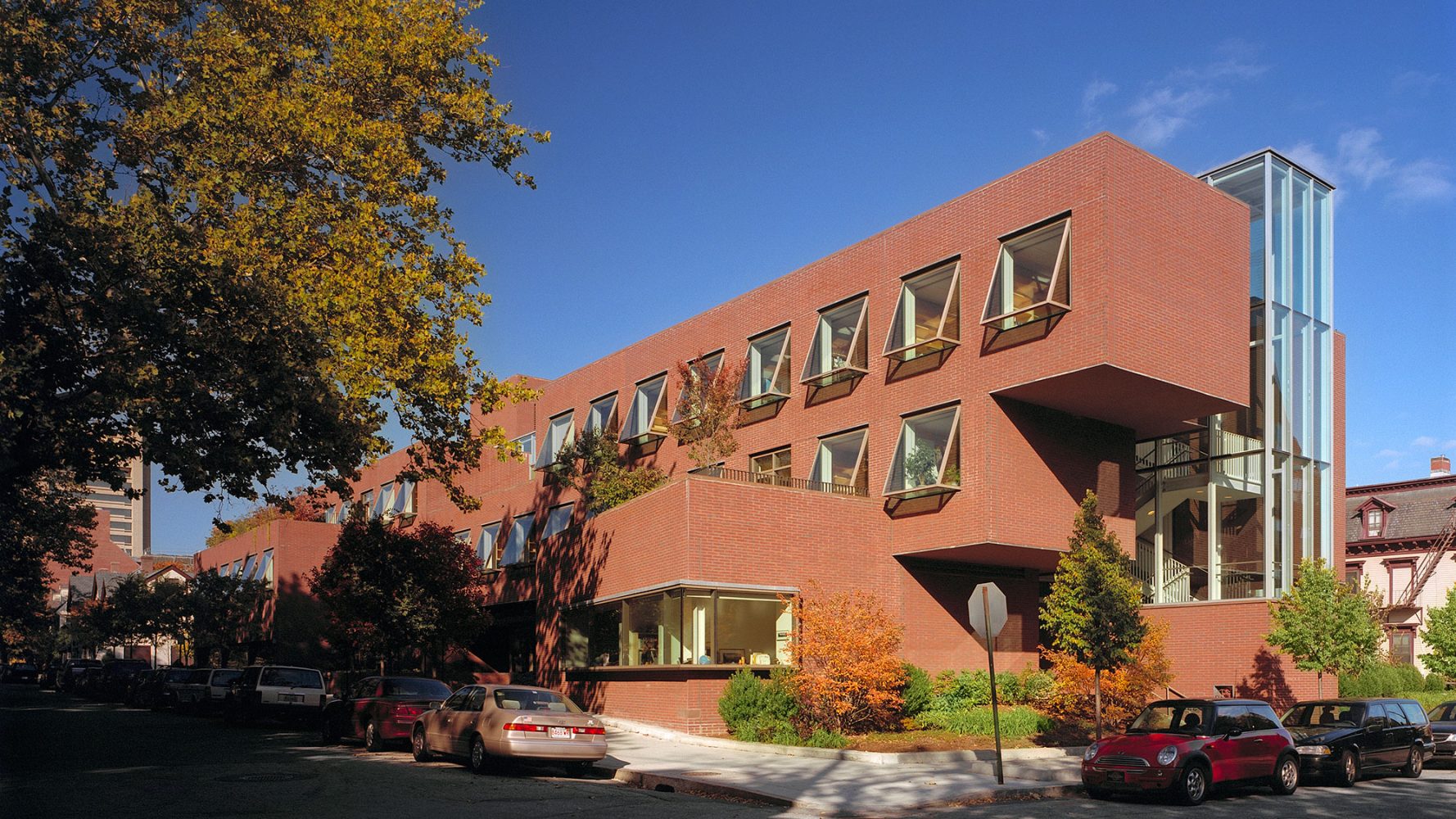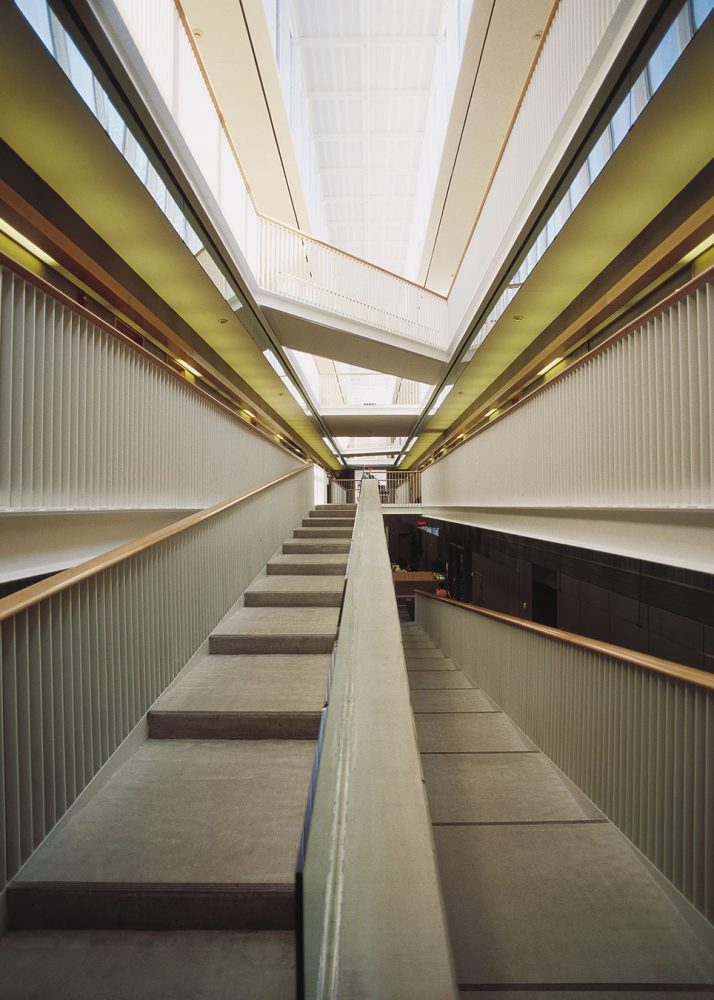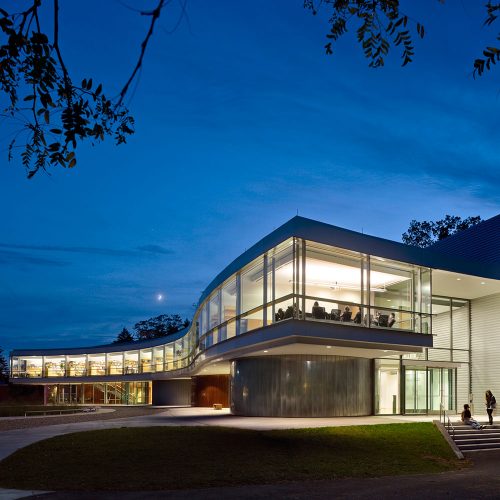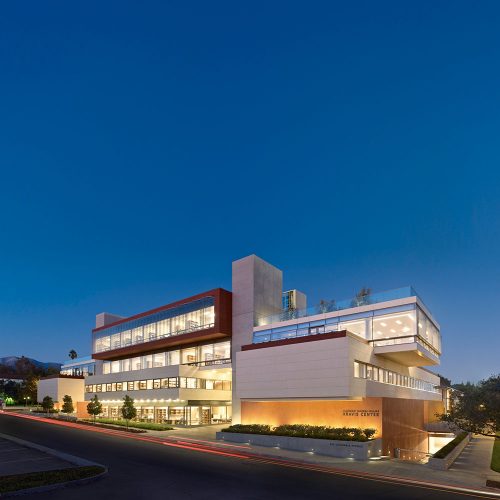Brown University, Watson Institute for International and Public Affairs
A three story, nearly block long atrium organizes the building’s program for students, faculty, visiting scholars, and policy makers, linking all spaces, including an extensive library, classrooms, and conference space, through a glass atrium that bathes the interior in natural light.
The Brown University, Watson Institute for International Studies evolved from Thomas J. Watson Jr.’s vision of a research and teaching center that would address the most pressing global problems of the day. It promotes the work of students, faculty, visiting scholars, and policy makers who analyze contemporary global problems and develop initiatives to address them. The brief includes offices for researchers, an extensive library, classroom space for international relations courses, and larger conference spaces for seminars and lectures.
Originally dispersed across five locations on the Brown University campus, the Watson Institute is now consolidated on a single site near its center. It is the first building in a new academic quadrangle being developed by the university. The design seeks to maximize interaction among research groups, mainly by organizing circulation in a triple-height atrium that runs nearly the entire length of the block-long site and bathes the interior in natural light.
The latest telecommunications facilities have been designed into the building in order to integrate its users with events occurring around the world. Initial space assessments for the new structure allowed for a significant increase in available square footage to accommodate research programs and growth in the number of visitors to the Institute.
The spaces that make up the shared resource “pods” of the program are on one side of the atrium in two distinct glazed cubic volumes that mark the back of the site. The street-side façade contains spaces intended for use by a limited number of people. The atrium then becomes the common point of transfer from any area of the building to another, bringing together the disparate constituencies that occupy the facility.


















